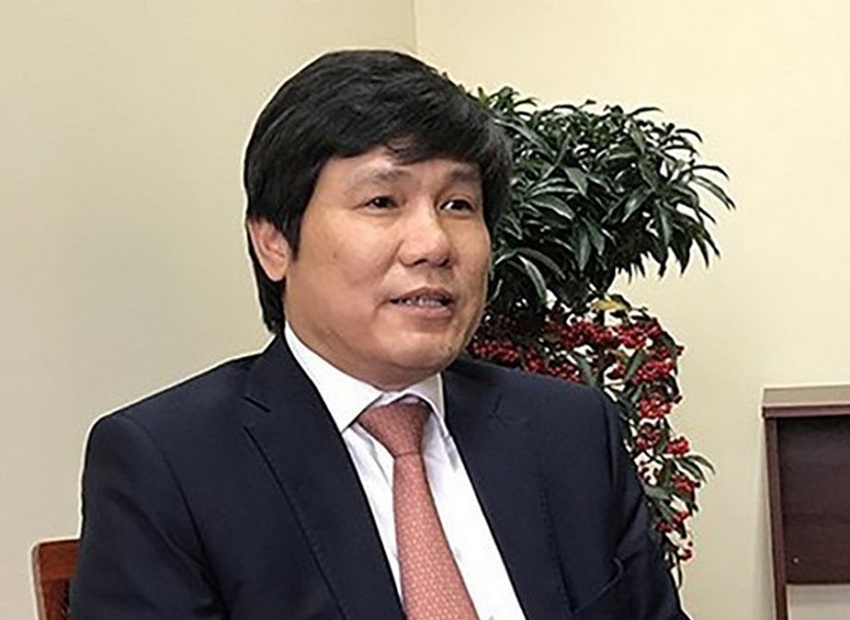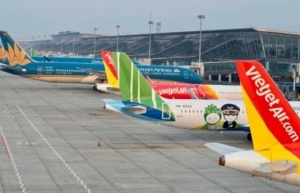Aircraft shortage should pose no effect on aviation recovery
Air carriers are crying out about the shortfall of aircraft, resulting in concerns among the locals and businesses about price increases. What are the reasons for this?
 |
| Dinh Viet Thang, head of the Civil Aviation Authority of Vietnam |
At present, the aircraft fleet of Vietnamese air carriers numbers 213 in total, a decrease of 18 aircraft compared to 2023. In particular, the actual number of aircraft in operation is 165-170, a decrease of about 40-50 units compared to the average last year.
There are some reasons for the decrease in the number of aircraft among Vietnamese airlines. Firstly, engine manufacturer Pratt & Whitney has announced a recall of PW1100 engines for in-depth inspection and repair to fix a manufacturing defect. This is estimated to affect 600-700 PW engines in operation worldwide.
In Vietnam, these engines are being used on 42 Airbus A321 NEO aircraft operated by Vietnam Airlines and Vietjet.
The recall of engines for inspection and repair has caused half of the Airbus A321 NEO aircraft fleet to stop operating from January 2024. The remaining aircraft will continue to be temporarily suspended in 2024 and 2025 when the engine inspection period is due.
Secondly, Pacific Airlines and Bamboo Airways have restructured their aircraft fleets to optimise management, reduce costs, increase production and business efficiency, and stabilise operations during this period, while they wait for market recovery and development.
In addition, Vietnamese airlines’ periodic maintenance of aircraft after serving the peak period of the Lunar New Year, and preparing for the upcoming peak summer season is also the cause of the decline.
How will the decrease in the number of aircraft directly impact domestic and international routes?
The change in aircraft fleets in 2024 will cause a certain decrease in operation on domestic and international routes in 2024 and 2025 of Vietnamese airlines.
The Vietnam Aviation Authority of Vietnam (CAAV) has crafted solutions and directed airlines to develop and implement plans to ensure and maintain maximum aircraft fleets and deploy additional leasing and purchasing of appropriate numbers of aircraft. They are also asked to increase flights at night hours at airports to compensate for the reduction in aircraft, while serving and meeting market demand and limiting negative impacts due to the aircraft fleet decline.
Vietnamese air carriers still apply several types of fees and surcharges which concern passengers. Do the CAAV and the Ministry of Transport support these?
Regulations on basic fares on domestic routes include the entire cost passengers must pay for an airline ticket, except for VAT. Revenues collected on behalf of businesses providing passenger terminal services, security services, and additional service prices are decided by airlines on the basis of balancing the airline’s ability to provide services as well as market needs such as meals, newspapers, checked baggage, in-flight entertainment, and others.
Vietnamese airlines all build products and prices for domestic airline tickets within the prescribed price frame. Airline ticket prices are declared by airlines to the CAAV in accordance with the law.
For example, for the Hanoi-Ho Chi Minh City flight route, Vietnam Airlines has 17 price levels in which the highest price is just over $120. Vietjet has 18 price levels in which the highest price is around the same, not exceeding the ceiling price according to regulations which state that the ceiling price on this route is around $144.
Will the shortfall of aircraft affect the recovery of the aviation market this year?
The decrease in the number of aircraft among air carriers in Vietnam is just a temporary situation, but it has affected the supply capacity to the market.
Airlines have now resumed plenty of international flights, and are planning to open more in the months to come.
To meet the requirements of the market and fulfil the task of recovery, the CAAV is working with various businesses in order to implement a number of helpful solutions.
First is to proactively negotiating with manufacturers to speed up the delivery plan of ordered aircraft. The second aspect is to seek aircraft rental sources, including rentals with and without a crew.
Thirdly, we will optimise operation stages to increase aircraft operating time per day by 15-20 per cent. Finally, increasing night flights to all routes and airports must be carried out.
 | Vietnam’s aviation market to be on full recovery by year end The Vietnamese aviation market is set to fully recover by the end of this year since the Asia-Pacific market warms up, according to the Civil Aviation Authority of Vietnam (CAAV). |
What the stars mean:
★ Poor ★ ★ Promising ★★★ Good ★★★★ Very good ★★★★★ Exceptional
Related Contents
Latest News
More News
- Global partnerships key to Vietnam’s IFC development (December 26, 2025 | 16:18)
- Vingroup pulls out of bid to invest in North-South high-speed railway (December 26, 2025 | 11:42)
- Strengthening supply chains through trade promotions and customs reform (December 24, 2025 | 14:00)
- PM orders investment model for North–South high-speed rail (December 22, 2025 | 17:43)
- LS Eco Energy to invest in Vietnam rare earth sector (December 22, 2025 | 17:31)
- Government moves to establish International Financial Centre (December 21, 2025 | 21:00)
- Vietnam's IFC to target global investment flows (December 21, 2025 | 18:00)
- Two national hospitals expand capacity with new facilities (December 20, 2025 | 09:00)
- Ha Tinh breaks ground on major Vingroup industrial and energy projects (December 19, 2025 | 18:24)
- EVN launches major power infrastructure projects nationwide (December 19, 2025 | 18:17)

 Tag:
Tag:





















 Mobile Version
Mobile Version